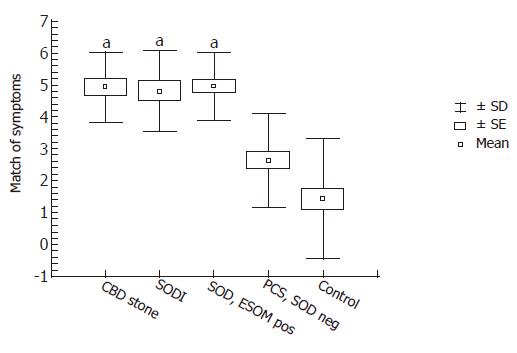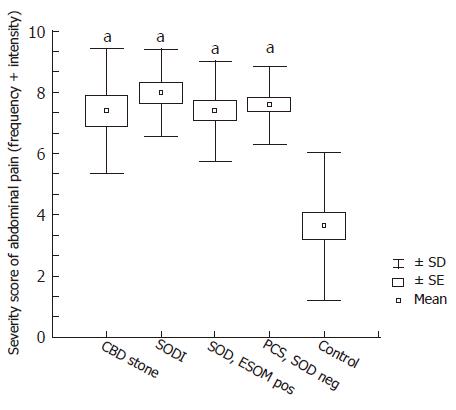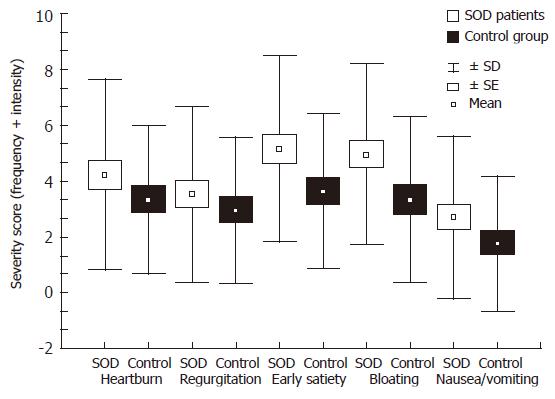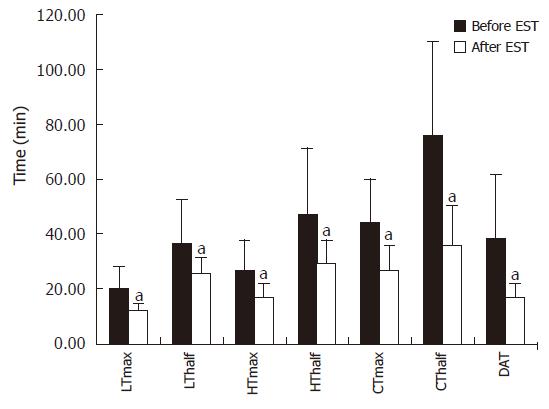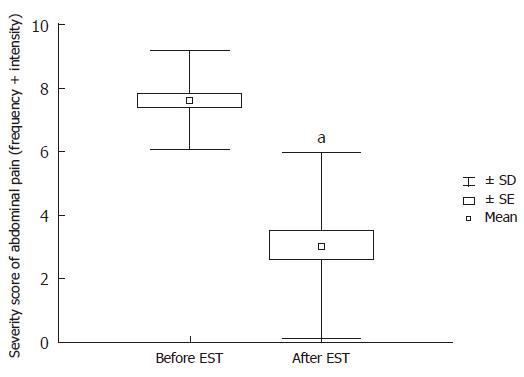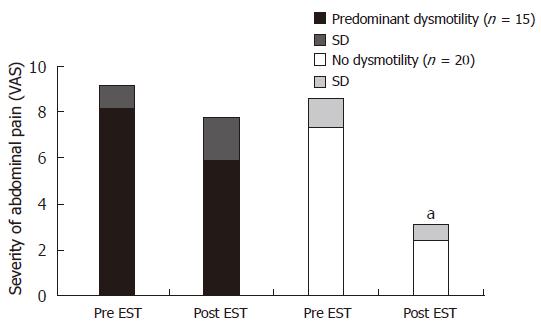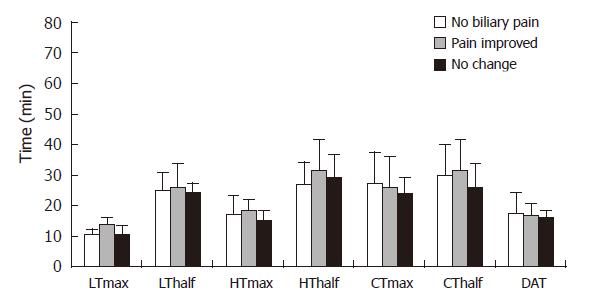Copyright
©2006 Baishideng Publishing Group Co.
World J Gastroenterol. Nov 14, 2006; 12(42): 6850-6856
Published online Nov 14, 2006. doi: 10.3748/wjg.v12.i42.6850
Published online Nov 14, 2006. doi: 10.3748/wjg.v12.i42.6850
Figure 1 Flow chart of our patient selection and diagnostic strategy.
Figure 2 Abdominal pain characteristics in different postcholecystectomy patient groups based on the results of our questionnaire.
Note that significant match of symptom characteristics with the predefined biliary type pain observed predominantly in patients with common bile duct stone and in patients with definite SOD. aP < 0.05 vs SOD negative PCS and controls.
Figure 3 Severity of abdominal pain (sum of frequency and intensity) determined by VAS in different postcholecystectomy patient groups.
Note that patients with postcholecystectomy pain syndrome but without any objective signs of SOD (including negative ESOM/QHBS) have severity scores equivalent to those with common bile duct stone disease. aP < 0.05 vs control.
Figure 4 Comparison of the severity of dyspeptic symptoms (sum of frequency and intensity) determined by VAS in patients with definite SOD and in postcholecystectomy controls.
Note that in patients with definite SOD, dyspeptic symptoms were rather frequent coexisting symptoms accompanied with typical biliary pain, although no significant differences detected as compared to “asymptomatic” cholecystectomized controls.
Figure 5 Effect of endoscopic sphincterotomy on the quantitative parameters of hepatobiliary scintigraphy in patients with definite SOD.
Note that all parameters depicts significant improvement of the transpapillary bile flow after papillotomy. aP < 0.05 vs before EST.
Figure 6 Dramatic and significant symptomatic improvement of patients with definite SOD determined by the comparison of severity scores (sum of frequency and intensity) of abdominal pain before and after papillotomy documented on the questionnaires (VAS).
aP < 0.05 vs before EST.
Figure 7 Effect of the severity of the concomitant dyspeptic symptoms in patients with biliary-type pain and definite SOD on the post-papillotomy outcome.
aP < 0.05 vs those without dyspeptic symptoms.
Figure 8 Comparison of post-papillotomy quantitative hepatobiliary scintigraphic parameters in patient groups with different symptomatic outcome.
Lack of statistically significant differences excluded endoscopic technical problems (incomplete papillotomy) in patients with poor symptomatic outcome and persisting biliary pain.
- Citation: Madácsy L, Fejes R, Kurucsai G, Joó I, Székely A, Bertalan V, Szepes A, Lonovics J. Characterization of functional biliary pain and dyspeptic symptoms in patients with sphincter of Oddi dysfunction: Effect of papillotomy. World J Gastroenterol 2006; 12(42): 6850-6856
- URL: https://www.wjgnet.com/1007-9327/full/v12/i42/6850.htm
- DOI: https://dx.doi.org/10.3748/wjg.v12.i42.6850










